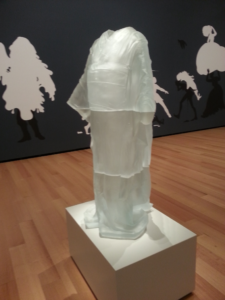Electro-Acupuncture 36St for Allergy and Inflammation
Kristen Sparrow • December 15, 2016


I was just wondering today if I, perhaps, make things more complicated and use more points than I need to.
In this animal study, they showed significant effect on allergic and inflammatory markers using electroacupuncture on 36St only. That would certainly make my job easier with all of the allergy patients I see…
Inflammation. 2016 Dec 13.
Electro-acupuncture at Acupoint ST36 Ameliorates Inflammation and Regulates Th1/Th2 Balance in Delayed-Type Hypersensitivity.
Wang Z1, Chen T2, Long M3, Chen L4, Wang L5, Yin N6,7, Chen Z8.
Author information
Abstract
Increasing evidence indicates anti-allergic and anti-inflammatory effects of electro-acupuncture (EA) therapy. However, its underlying mechanism on delayed-type hypersensitivity (DTH), a classic allergic inflammatory disease, still remains unclear. In this study, we aimed to explore the immunomodulatory mechanism of EA intervention in a mouse model of ovalbumin (OVA)-induced DTH. Mice were randomly divided into four groups: Control, OVA-DTH, DTH + EA, DTH + Sham. “Zusanli” acupoint (ST36) was used for DTH + EA, whereas a non-acupoint (localized 5 mm below the “Zusanli” acupoint) was selected for DTH + Sham. Footpad thickness was checked, and the infiltration of inflammatory cells was estimated by hematoxylin and eosin staining. Levels of IgG and IgE in serum of different groups and inflammatory cytokines in the supernatants from homogenized footpads, including IFN-γ, TNF-α, IL-4, and IL-5, were determined by ELISA. Cell proliferation of spleen lymphocytes was assayed by 3-(4,5-dimethyl-2-thiazolyl)-2,5-diphenyl-2-H-tetrazolium bromide (MTT). The frequency of CD4+IFN-γ+ and CD4+IL-4+ T cells was analyzed with flow cytometry. In addition, the mRNA and protein expression of T-bet and GATA-3 were evaluated by real-time PCR and Western blotting, respectively. Our data showed EA treatment at acupoint ST36 relieved the pathological progression of DTH responses via reduction in footpad swelling, infiltration of inflammatory cells, levels of IgG and IgE as well as decreased production of IFN-γ and TNF-α in homogenized footpad tissue. Moreover, detailed studies were performed revealing that EA attenuated the percentage of CD4+IFN-γ+ T cells and prevented Th cells differentiation into Th1 cells, and this results from inhibiting secretion of IFN-γ and suppressing expression of T-bet, an IFN-γ transcription factor. The results indicated that EA treatment improved Th1-mediated allergic skin inflammation via restoring Th1/Th2 balance by curbing Th1 differentiation. These findings suggested that EA at acupoint ST36 might be a useful and promising therapeutic for allergic inflammatory as well as Th1-mediated inflammation response.

